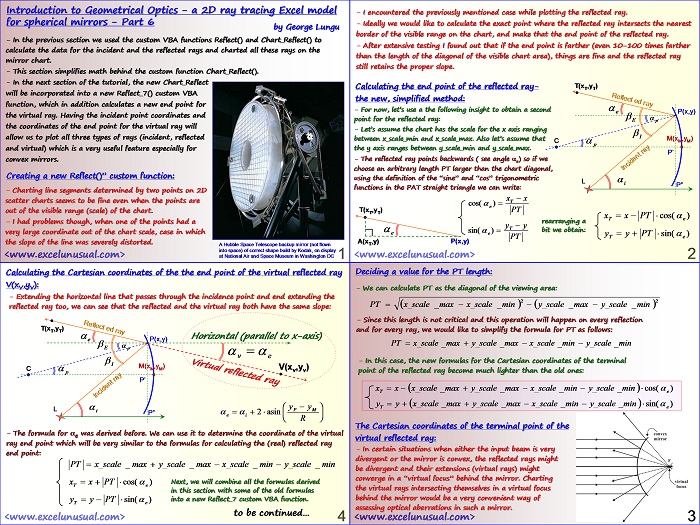This is a demonstrative model for 2D spherical mirror ray tracing in Excel displaying both the real reflected rays and the virtual reflected rays. You you have the option of turning the visibility of the virtual rays off if you wish. It works in Excel 2003 at about 40 frames per second and in Excel 2007 at about 4 frames per second.… Read More... "A 2D Demo for Spherical Mirrors in Excel – with virtual reflected rays"








